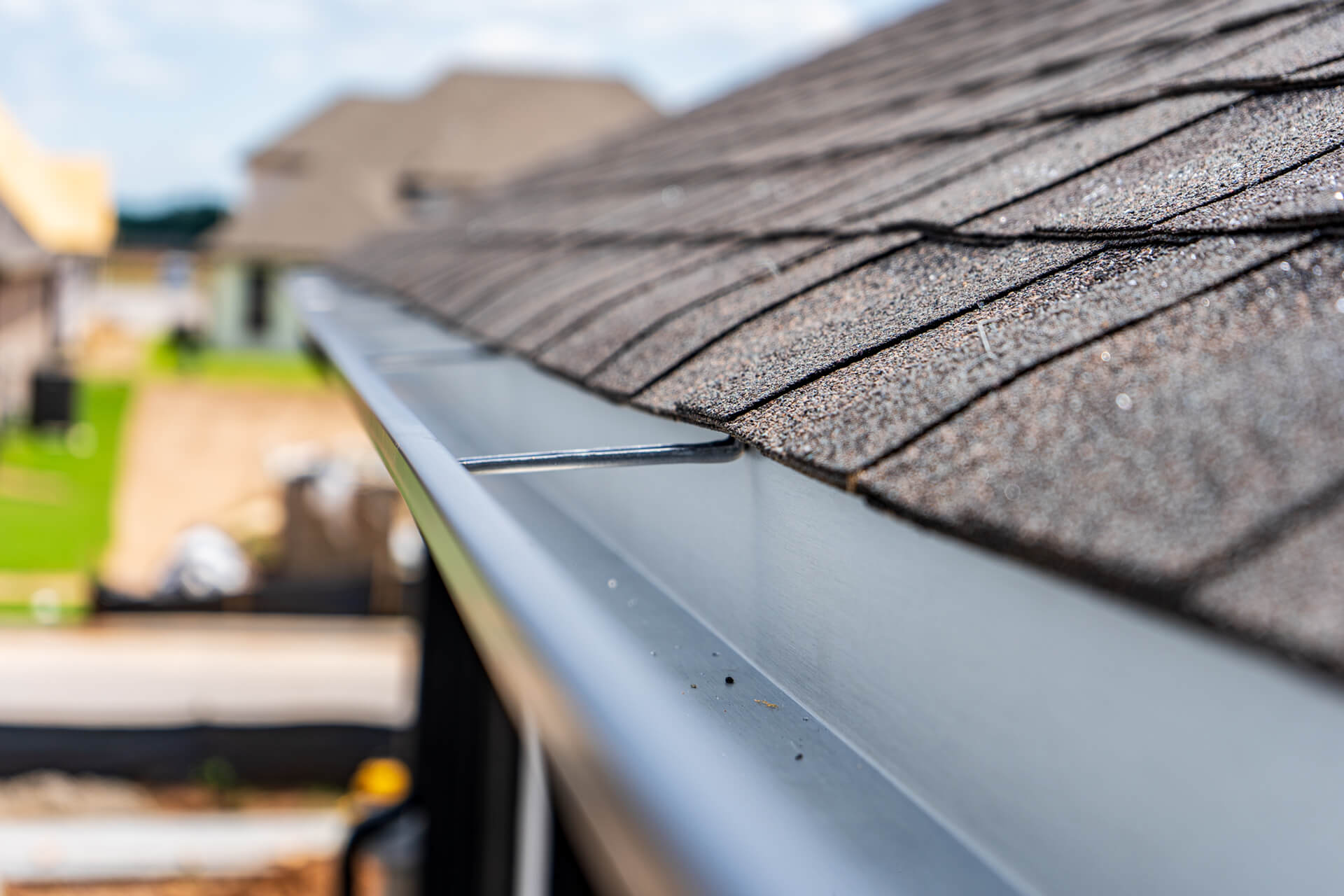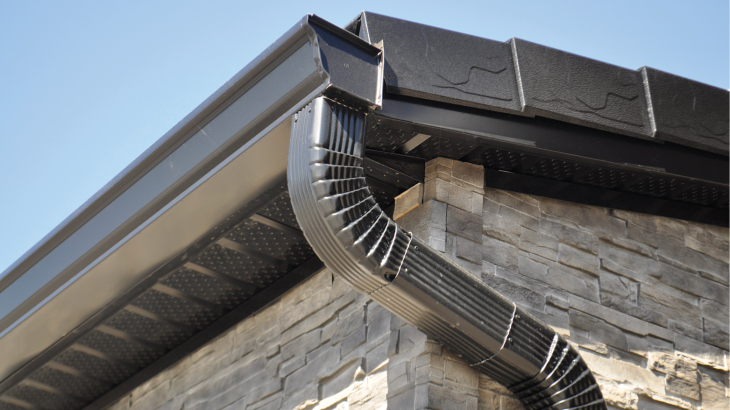A well-designed and functional roof is more than just a crowning feature of a building—it’s a shield that protects the structure from the elements. One often-overlooked component in this protective ensemble is the eavestrough, an essential element of a roofing system. In this blog post, we’ll explore the reasons why roofs need eavestroughs and the critical role these troughs play in safeguarding homes and buildings.
Rainwater Management: Preventing Water Damage
One of the primary functions of eavestroughs is to manage rainwater effectively. When rain falls on a roof, it cascades down the slope and accumulates at the edges. Without eavestroughs, this water would simply drip off the roof, creating a waterfall effect that can lead to soil erosion around the foundation. Over time, this erosion can compromise the stability of the foundation, potentially causing structural issues for the entire building. Eavestroughs act as channels, collecting rainwater and guiding it away from the foundation. This controlled flow prevents excessive water accumulation around the base of the building, reducing the risk of foundation damage and minimizing the potential for basement flooding.
Preventing Soil Erosion and Landscaping Damage
In addition to protecting the foundation, eavestroughs play a crucial role in preventing soil erosion and protecting landscaping features around the building. Uncontrolled water runoff can erode soil, wash away mulch, and damage plants, leading to an unsightly and potentially costly landscaping nightmare. Eavestroughs help maintain the integrity of the landscape by channeling rainwater away from delicate plants and garden beds. This not only preserves the aesthetic appeal of the property but also safeguards the investment in landscaping and outdoor features.
Avoiding Basement Flooding
When rainwater is not properly directed away from the foundation, there is an increased risk of basement flooding. Excessive water around the foundation can find its way into basements through cracks, gaps, or porous materials. Basement flooding poses a significant threat to the structural integrity of the building, as well as the safety and well-being of its occupants. Eavestroughs serve as a crucial line of defense against basement flooding by channeling rainwater away from the foundation. This proactive approach to water management helps homeowners avoid the headaches and expenses associated with water damage in basements.

Preventing Exterior Water Stains and Damage
As rainwater cascades off the roof, it can leave unsightly water stains on the exterior walls of a building. Over time, these stains may become more pronounced and difficult to remove, diminishing the curb appeal of the property. Eavestroughs act as a barrier, preventing water from directly running down the sides of the building and reducing the likelihood of exterior water stains. Furthermore, eavestroughs contribute to the preservation of exterior finishes, such as paint and siding. By redirecting rainwater away from the walls, they help prevent the deterioration and damage that can occur when exterior surfaces are constantly exposed to water runoff.
Preventing Ice Dams in Cold Climates
In colder climates, the buildup of ice dams on roofs can be a serious concern. Ice dams form when melting snow refreezes at the eaves, creating a barrier that prevents proper drainage. This stagnant water can seep into the roof structure, causing damage to shingles, insulation, and even the interior of the building. Eavestroughs, when properly installed and maintained, facilitate the smooth flow of water, reducing the likelihood of ice dam formation. This is especially important in regions where winter temperatures can lead to freezing and thawing cycles.
Preserving the Roof’s Structural Integrity
The health of a roof is essential for the overall well-being of a building. Eavestroughs contribute to the preservation of a roof’s structural integrity by preventing water-related issues. Without proper drainage, water can pool on the roof, leading to the deterioration of roofing materials, such as shingles or tiles. Over time, this can compromise the integrity of the roof, resulting in leaks, rot, and the need for costly repairs. Eavestroughs ensure that rainwater is efficiently directed away from the roof, minimizing the risk of water-related damage and prolonging the life of the roofing system.
Eavestroughs may be a humble and often unnoticed component of a building’s exterior, but their importance in protecting the structure cannot be overstated. From preventing foundation damage and basement flooding to preserving landscaping and enhancing the longevity of roofing systems, eavestroughs play a multifaceted role in maintaining the integrity and functionality of homes and buildings. Recognizing the significance of these unassuming troughs underscores their essential contribution to the overall health and longevity of a property. Need yours looked at? Contact Colin’s Roofing & Eavestrough today!



















